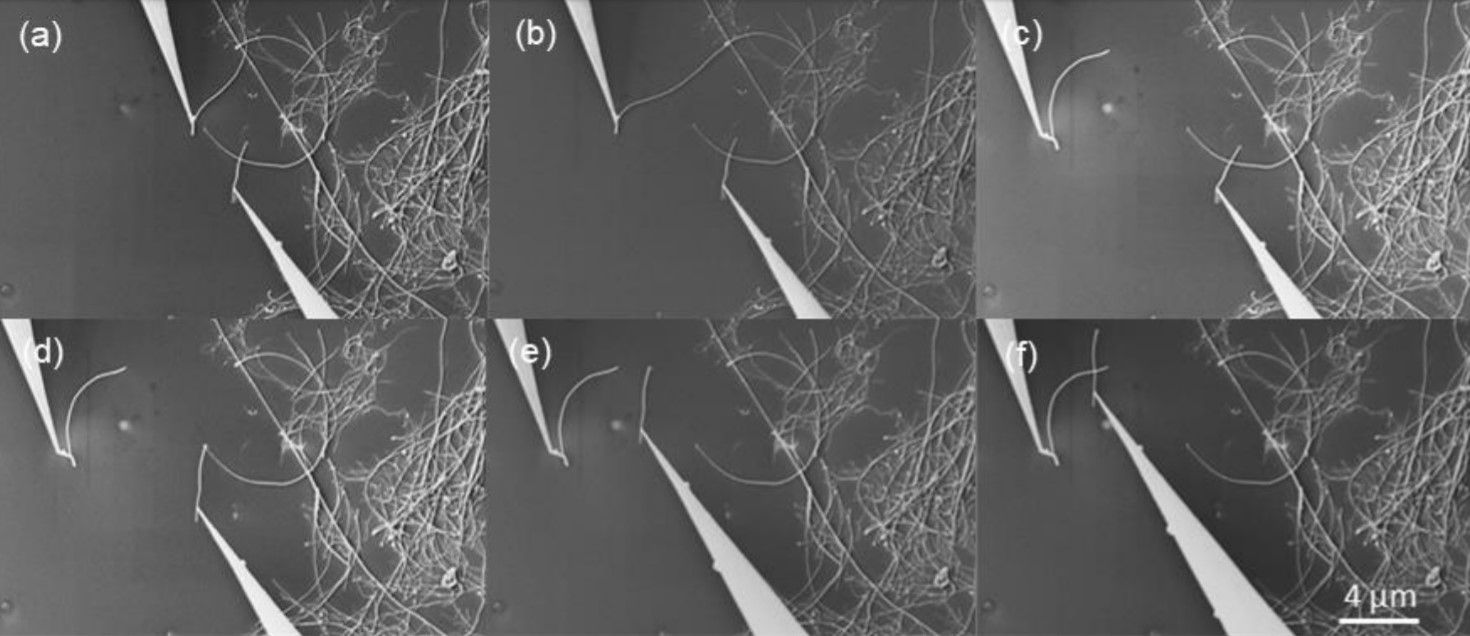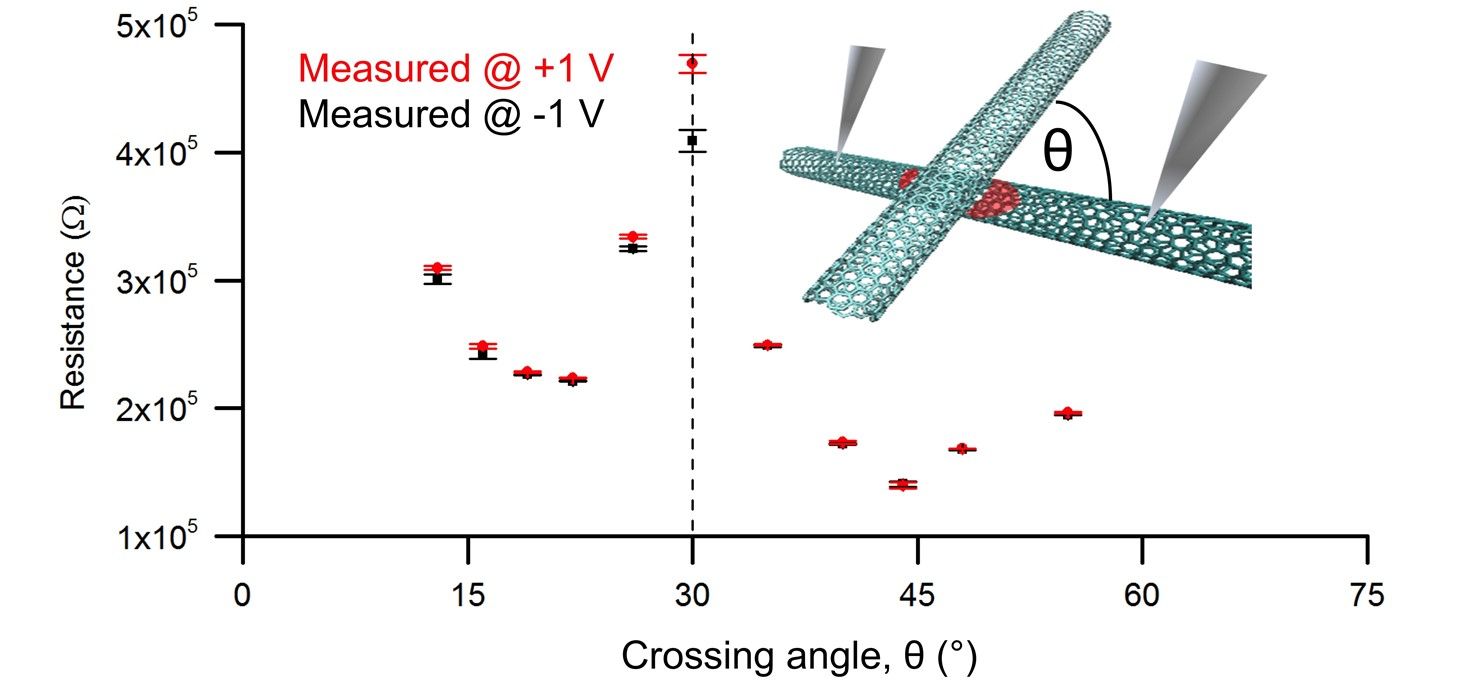Due to their excellent electrical conductivity properties, carbon nanotubes have long been hailed as a vital raw material for next generation electronics. If synthesized with sufficient purity they are able to transmit electrical current for either power supply, power storage, or for sending information in super quick time with little loss of energy through resistance.
However, due to their incredibly small size it is incredibly difficult to measure the electrical conductivity of actual nanotubes.
Carbon nanotubes (CNTs) often have a diameter that is only a few nanometres wide, and 1nm equals 0.000001mm. This made measuring the electrical properties of individual tubes impossible, nanotechnology specialists simply had to rely on theoretical calculations.
However, these ‘best guesses’ were often quite inaccurate, as they only considered tubes that were of similar diameter, which in practice is rarely the case.
Due to the ‘natural’ way that carbon nanotubes are synthesized or ‘grown’, a sample of carbon nanotubes will contain tubes of varying diameters. When these tubes come into contact with each other their electrical conductivity is affected, making theoretical calculations their conductivity impossible.
But now a team from the University of Swansea in Wales, led by Prof. Andrew Barron, the Energy Safety Research Institute’s director, and his team have found the key to the problem.
As the University of Swansea press release explains, “Prof. Barron and his research team passed a large voltage through one of the crossed carbon nanotubes which broke it and the two halves were welded to the probes.”
From this point onwards, the team knew that any measurements taken by the probes were from two carbon nanotubes of matching type and diameter, as they were two halves of one original tube. This enabled the team to conduct experiments to produce measurements that were previously only theoretical.
The results showed that, “… if two carbon nanotubes of different diameter were laid across each other the resistance at the point of contact was higher than if they were similar in diameter.”

The team have now published their findings in the journal Nanoletters, where they state that, “Measurement of the angular and overlap dependence of the conduction between two identical carbon nanotubes (CNTs), with the same diameter and chirality, has only been possible through theoretical calculations; however, our observation of increased resistance adjacent to the junction between two CNTs facilitates such measurements.”
Consequently, the team was able to prove some key theories. As the study reports;
“Varying the angle of overlap between the two halves of the original carbon nanotube shows a variation in electrical conductivity.
Measuring conductivity between two parallel halves of cut carbon nanotube leads to results that are consistent with the theoretical concept of atomic scale registry.”

While these rules are technical in nature, they are hugely practical to those researching how carbon nanotubes can be used in the manufacture of advanced electrical devices.
Existing power cables can overheat, leading to power outages in devices and networks. Additionally, conventional technology results in the global loss of about 8% of electricity during transmission. Being able to measure the conductivity between identical carbon nanotubes will lead to improvements in the efficiency of the electrical power cables of the future.
“This is the first time that it has been possible to make experimental measurements to confirm theoretical models,” says Barron. “While it is nice to confirm theory with a real experiment, our methodology now opens up a myriad of possibilities for measurements not previously possible. We are looking forward to expanding the basic knowledge of carbon nanotubes that will help us in the production of efficient electrical cabling and a myriad of other technologies in the future."
Photo credit: Nanoletters, Swanseauniversity, Understandingnano, & Futuremarketsinc
